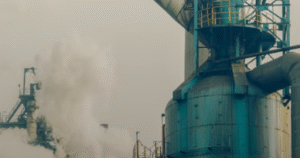$SPY $OIL #Tariffs #TradeWar #GlobalEconomy #USPolitics #India #RussianOil #EconomicSanctions #MarketImpact #InternationalTrade
How Does Your Tariff Rate Impact More Than Just Trade Policies? Discover the Hidden Influences!
In a move that underscores the complexity of international trade dynamics, the former U.S. administration led by President Trump implemented a significant tariff increase on imports from India. This 25% tariff was further compounded by an additional “penalty” due to India’s engagements in purchasing oil from Russia. This dual-layered financial imposition is a stark reminder of how geopolitical actions ripple through the global economy.
Exploring the Depths of Trade Tariffs and Global Relations
Understanding the broader implications of such tariffs requires a dive into the mechanics of international trade and diplomacy. When a nation like the U.S. imposes tariffs, it’s not merely an economic barrier. It’s a diplomatic signal, a tool that can be used to influence another country’s political and economic decisions. For India, a country that relies heavily on oil imports to fuel its burgeoning economy, choosing between trade partners becomes a high-stakes game.
Furthermore, this scenario sheds light on the delicate balance of global oil politics. The additional “penalty” on India for purchasing Russian oil isn’t just about economics; it’s about aligning global alliances and signaling disapproval of specific international relationships. This is a vivid example of how tariffs are more than fiscal tools; they are also strategic geopolitical instruments.
The Impact on Global Markets and Investors
Such policies invariably have ripple effects on global markets. Investors and market analysts closely watch these developments, as they can have immediate and long-term impacts on stock and commodity prices. The imposition of tariffs and penalties often leads to volatility in the markets, affecting everything from stock indices to the price of crude oil. For those keen on understanding these market dynamics, exploring the impact on stock markets can provide deeper insights.
Moreover, the interconnectedness of global economies means that the effects of such tariffs are not limited to the immediate countries involved. They can cause shifts in global supply chains, alter commodity prices worldwide, and even affect currency exchange rates. Thus, for anyone involved in international trade or invested in the financial markets, keeping an eye on these developments is crucial.
Navigating the Future of Trade Tariffs
As the global landscape evolves, the roles and impacts of tariffs and economic sanctions continue to provoke significant debate among policymakers, economists, and business leaders. The key to navigating this complex terrain lies in understanding not only the immediate effects but also the long-term strategic changes they herald.
To further delve into the ramifications of such economic strategies and their influence on global trade, one can explore the intricate details of how nations maneuver through these economic battlegrounds. This not only helps in forming better investment strategies but also in anticipating future economic policies and their global impacts.
In conclusion, the layering of tariffs and additional penalties like those imposed on India for its oil purchases from Russia illustrates the multifaceted nature of modern economic sanctions. These measures are emblematic of how deeply entwined politics and economics have become on the global stage. As we advance, the ability to decode such complex economic signals will be imperative for anyone involved in the realm of international trade and finance.











Comments are closed.